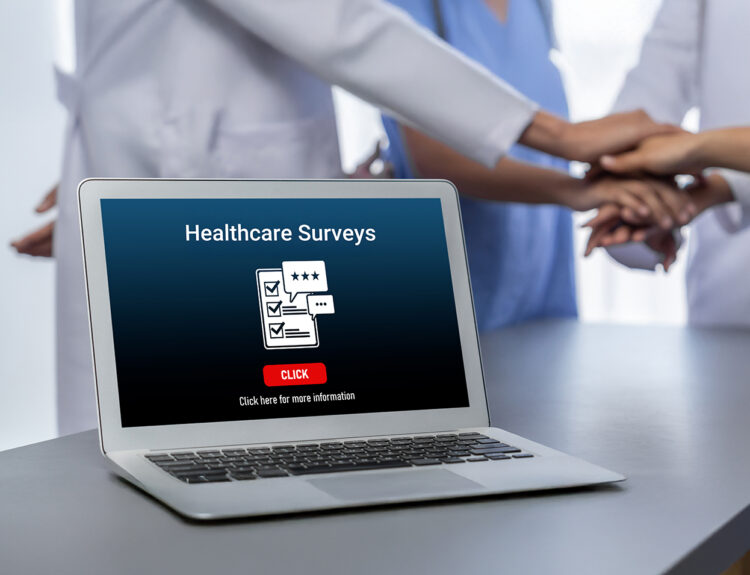Are you a healthcare professional (HCP)? Then you must have surely come across paid medical surveys. Considered a highly important aspect of medical research, these surveys play an important role in gathering market data from frontline HCPs and conveying them as actionable insights to healthcare stakeholders responsible for innovations.
As an HCP, your participation in medical research surveys is more crucial than you think – it’s the fuel that drives medical innovation forward. You’re not just answering questions; you’re actively shaping the future of medicine, contributing to discoveries that could revolutionize patient care and treatment protocols.
But have you ever wondered about the journey your responses take? How do they evolve from answers on a page to revolutionary changes in patient care?
This blog will delve into the meticulous process of paid medical research that turns your valuable input into life-changing medical breakthroughs. Whether you’re a seasoned survey participant or new to the game, this behind-the-scenes tour will reveal how your expertise shapes the future of healthcare.
SETTING THE STAGE BY DEFINING THE RESEARCH OBJECTIVE
A well-defined research objective is the foundation of any successful medical research surveys. This crucial first step is a guiding principle throughout the research process, much like a blueprint guides building construction. A research objective in medical surveys typically aims to address specific healthcare questions or hypotheses.
A clear, concise, achievable research objective provides direction, focus, and measurability. For example, a vague objective like “study diabetes management” could lead to unfocused research. In contrast, a specific objective such as “evaluate the adoption rate and perceived effectiveness of continuous glucose monitoring systems among endocrinologists in urban hospitals” provides a clear roadmap for the entire research process.
CRAFTING THE PERFECT SURVEY
The design of medical research surveys can significantly impact the quality and usefulness of the data collected. Key considerations by market research firms include selecting the appropriate survey format (online, telephone, or face-to-face), meticulously crafting questions that align with research objectives, and structuring the survey for optimal flow and clarity. Each element is carefully constructed to ensure the survey effectively captures the information needed to address the research goals.
Market research firms might conduct a pilot test before full deployment. This small-scale trial helps identify potential issues, ensures questions are interpreted as intended and allows for necessary refinements. This attention to detail in the design phase lays the groundwork for collecting high-quality data that can advance medical knowledge and practice.
A SAMPLING STRATEGY FOR CHOOSING PARTICIPANTS
The goal of a market research firm is to create a representative sample that accurately reflects the larger population it is studying. This is crucial for obtaining reliable and generalizable results in survey-based medical research. Market research firms might employ various sampling strategies, including random sampling, where every member of the target population has an equal chance of selection. A stratified sampling strategy ensures representation from specific subgroups, while convenience sampling is more useful for pilot studies or when resources are limited.
These careful and varying sampling approaches transform individual responses into powerful, actionable insights for the entire medical community, laying the foundation for results that can be confidently applied to improve healthcare practices and policies.
PRE-SCREENING AND RECRUITMENT
Market research firms employ a rigorous pre-screening process to ensure respondents meet specific study criteria, safeguarding the validity and representativeness of the findings. The recruitment efforts span professional medical networks, specialized healthcare platforms, and targeted outreach programs, allowing the firm to gather diverse yet focused perspectives aligned with the research objectives.
The medical research firm will prioritize transparency, providing clear information about the study and obtaining informed consent, respecting participants’ autonomy and rights. This careful approach to recruitment ensures high-quality data collection and fosters a mutually beneficial research partnership.
GATHERING THE WEALTH OF HCP KNOWLEDGE WITH DATA COLLECTION
The data collection phase involves methodically gathering responses. Throughout this process, a market research firm remains vigilant against potential biases that could skew the results while maintaining the highest standards of participant confidentiality. Issues such as selection bias and response bias are recognized and mitigated, ensuring the integrity of the collected data.
Combining technological tools with human expertise allows market research firms to create a data collection process that is efficient, accurate, and respectful of the participants’ contributions.
DECODING THE MYSTERY THROUGH DATA ANALYSIS

Market research firms employ various validation techniques to maintain the highest reliability standards, including cross-validation, sensitivity analyses, or peer review. A team of experts carefully interprets these results in the context of the research objectives, ensuring that the findings are meaningful and relevant to the healthcare landscape.
The data is analyzed and synthesized into comprehensive insights, connecting disparate pieces of information to form a coherent narrative that addresses the initial research questions. The result is evidence-based information that healthcare professionals and decision-makers can use to drive tangible improvements in patient care and medical practices.
REPORTING AND KNOWLEDGE DISTRIBUTION
After rigorous analysis, the market research firms communicate their findings to medical innovators and the broader medical community. This involves developing comprehensive reports tailored to various stakeholders, transforming complex data into clear visual representations, and submitting findings to peer-reviewed medical journals. They might also present results at relevant conferences, fostering direct engagement with healthcare professionals.
The effective dissemination of the research outcomes enables the translation of valuable insights gained from survey-based studies into practical applications.
THE NEVER-ENDING JOURNEY OF HEALTHCARE ADVANCEMENTS
The journey of healthcare innovation through medical research is ongoing. Each survey, insight, and improvement add to the continuous narrative of healthcare advancement, with you, the healthcare professional, playing a pivotal role as the author and hero of this take.
Your participation is crucial. The next time you receive a survey invitation or a request for your expertise, remember the intricate processes that led to that moment. Consider the potential impact of your participation. Your voice is not just heard; it is essential in healthcare improvement.
If you want to contribute to the next chapter of advancements in healthcare, join MDForLives. The platform offers opportunities to participate in paid medical surveys aligned with your expertise.
Share your insights, case studies, and articles at collaboration@mdforlives.com to contribute to the dialogue on medical innovation and earn exclusive rewards!
REFERENCES:
Designing, Conducting, and Reporting Survey Studies: A Primer for Researchers
www.ncbi.nlm.nih.gov
How to interpret surveys in medical research: A practical approach
www.ccjm.org
A. Royden D’Souza is a professional writer with over 5 years of experience in the healthcare industry. He holds an engineering degree and has worked with several brands to meet their content requirements. He is passionate about writing engaging content for healthcare professionals, allied healthcare professionals, and nurses.






